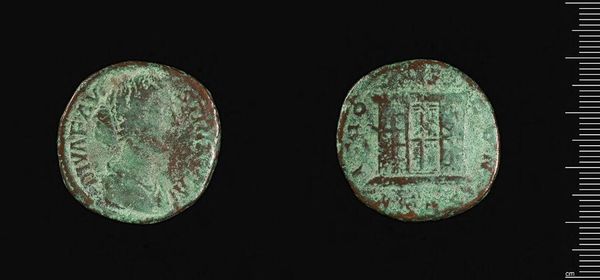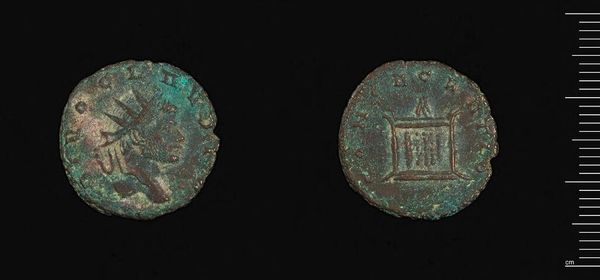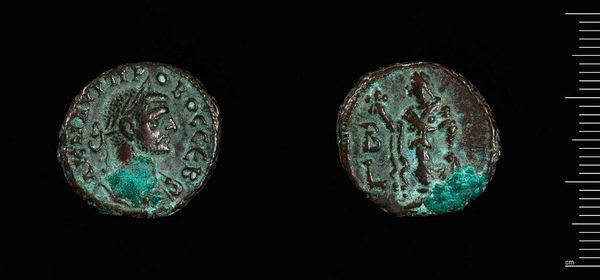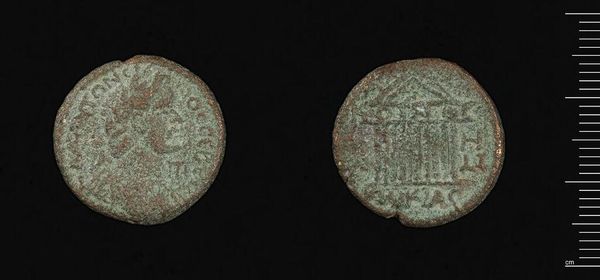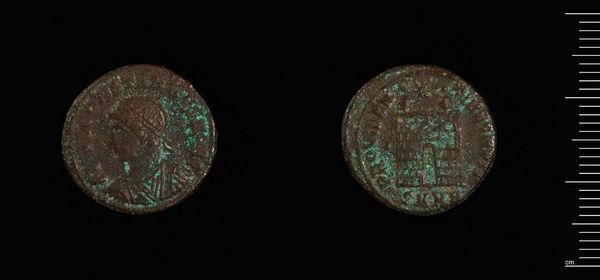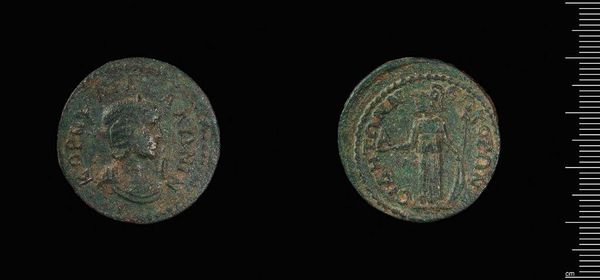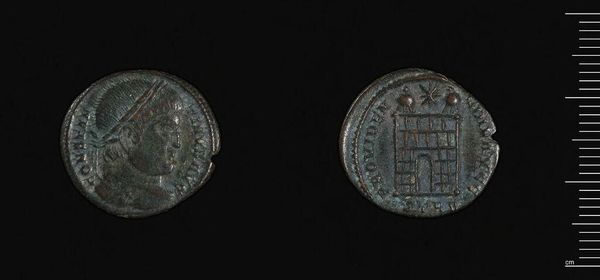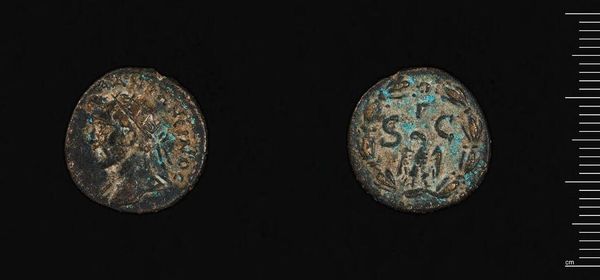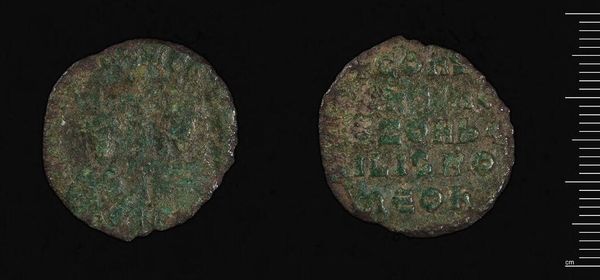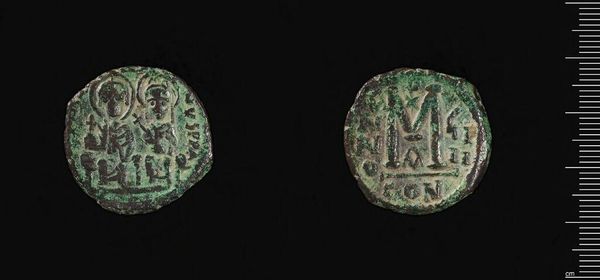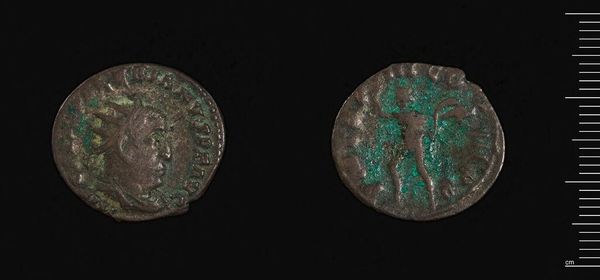
Dimensions: 3.29 g
Copyright: CC0 1.0
Curator: Here we have a fascinating artifact: a coin of Crispus, currently residing at the Harvard Art Museums. What strikes you about it? Editor: The patina is immediately arresting. That delicate green speaks of centuries of material transformation, of the slow churn of the earth. What was the coin made from? Curator: Likely bronze. The coin's surfaces feature the effigy of Crispus, son of Constantine, and on the other side, what appears to be a fortified gate with stars above it. Editor: Gates, of course, are potent symbols of transition and protection. The stars, eternal witnesses, suggest divine sanction of the power held within those walls. Curator: I'm more interested in the labor embedded in its production. How many hands shaped this, from mining the ore to striking the die? Each stage represents a network of power. Editor: Absolutely, and each decision in its design, from the choice of imagery to the weight of the metal, reinforces the intended message of imperial strength. Curator: It's amazing to think about how such a small object served as both a tool of economic exchange and a billboard for the state. Editor: It’s a testament to the enduring power of symbols, isn't it? That even in something so commonplace, echoes of a grand narrative resonate across time.
Comments
No comments
Be the first to comment and join the conversation on the ultimate creative platform.
